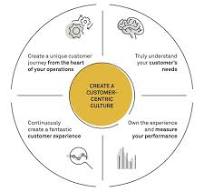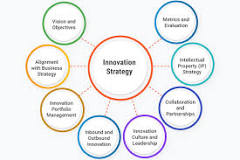The Power of E-commerce Development Solutions
In today’s digital age, having a strong online presence is essential for businesses looking to reach a wider audience and drive sales. E-commerce development solutions play a crucial role in enabling companies to establish and grow their online stores effectively.
Benefits of E-commerce Development Solutions
Enhanced User Experience: With custom e-commerce development solutions, businesses can create user-friendly and intuitive online shopping experiences that keep customers engaged and coming back for more.
Scalability: E-commerce platforms can be tailored to accommodate the growth of a business, allowing for seamless expansion and the addition of new features as needed.
Secure Transactions: Implementing secure payment gateways and encryption protocols ensures that customer data is protected, building trust and confidence in the online shopping experience.
Key Features of E-commerce Development Solutions
Mobile Responsiveness: In a mobile-first world, e-commerce websites must be optimised for mobile devices to cater to the increasing number of users shopping on smartphones and tablets.
Inventory Management: Effective e-commerce solutions include robust inventory management systems that help businesses track stock levels, manage orders efficiently, and prevent overselling.
SEO Integration: Integrating search engine optimisation (SEO) features into e-commerce websites improves visibility in search engine results, driving organic traffic and increasing sales opportunities.
Choosing the Right E-commerce Development Partner
When selecting an e-commerce development partner, businesses should consider factors such as expertise, experience, portfolio, and client testimonials. A reliable partner will work closely with you to understand your unique requirements and deliver tailored solutions that align with your business goals.
Investing in professional e-commerce development solutions can give your business a competitive edge in the crowded online marketplace, driving growth and success in the digital realm.
Top 9 Benefits of E-Commerce Development Solutions for Business Growth
- Increased online visibility for your business
- Ability to reach a global audience 24/7
- Convenient shopping experience for customers
- Efficient order management and processing
- Integration with secure payment gateways for safe transactions
- Personalised marketing and targeted promotions
- Scalability to accommodate business growth and changing needs
- Detailed analytics and reporting for informed decision-making
- Enhanced customer engagement through interactive features
Challenges in E-commerce Development: Navigating Costs, Time, and Technical Hurdles
- High initial investment
- Time-consuming development process
- Maintenance and updates
- Technical expertise required
- Integration challenges
- Security risks
- Limited scalability
Increased online visibility for your business
By utilising e-commerce development solutions, businesses can significantly enhance their online visibility, reaching a broader audience and increasing brand awareness. A well-designed e-commerce platform with effective SEO strategies can improve search engine rankings, making it easier for potential customers to discover and engage with the business online. Increased online visibility not only drives more traffic to the website but also boosts sales opportunities, ultimately leading to business growth and success in the competitive digital landscape.
Ability to reach a global audience 24/7
One of the key advantages of e-commerce development solutions is the ability to reach a global audience 24/7. By establishing an online store, businesses can transcend geographical boundaries and time zones, allowing them to connect with customers from around the world at any time of day or night. This accessibility not only expands the potential customer base but also provides unparalleled convenience for shoppers who can browse, purchase, and receive products or services at their own convenience, contributing to increased sales and brand visibility on a global scale.
Convenient shopping experience for customers
E-commerce development solutions offer a significant advantage by providing a convenient shopping experience for customers. With user-friendly interfaces, secure payment gateways, and streamlined navigation, online shoppers can browse products, make purchases, and track orders from the comfort of their own homes. This convenience not only saves time and effort for customers but also enhances their overall satisfaction, leading to increased loyalty and repeat business for e-commerce retailers.
Efficient order management and processing
Efficient order management and processing is a key advantage of e-commerce development solutions. By implementing streamlined systems and automated processes, businesses can effectively handle orders, track inventory, and fulfil customer requests in a timely manner. This efficiency not only improves the overall customer experience but also reduces the risk of errors and delays, ultimately leading to increased customer satisfaction and loyalty. With efficient order management in place, businesses can optimise their operations, save time and resources, and focus on growing their online sales successfully.
Integration with secure payment gateways for safe transactions
One significant advantage of e-commerce development solutions is the seamless integration with secure payment gateways to ensure safe and reliable transactions for online customers. By implementing robust encryption protocols and trusted payment processors, businesses can instil confidence in their customers, reassuring them that their sensitive financial information is protected during the checkout process. This feature not only enhances the overall shopping experience but also builds trust and credibility for the e-commerce platform, ultimately leading to increased sales and customer loyalty.
Personalised marketing and targeted promotions
Personalised marketing and targeted promotions are a key advantage of e-commerce development solutions. By leveraging customer data and analytics, businesses can create tailored marketing campaigns that resonate with individual preferences and behaviours. This approach not only enhances the shopping experience for customers but also increases the likelihood of conversion and repeat purchases. Through targeted promotions, businesses can deliver relevant offers and discounts to specific customer segments, driving engagement and loyalty. Overall, personalised marketing enabled by e-commerce development solutions allows businesses to connect with their audience on a more personal level, ultimately leading to improved sales performance and customer satisfaction.
Scalability to accommodate business growth and changing needs
Scalability is a key advantage of e-commerce development solutions, allowing businesses to adapt and expand their online operations in line with growth and evolving requirements. With scalable e-commerce platforms, companies can easily adjust their online stores to accommodate increasing product offerings, higher website traffic, and changing consumer demands. This flexibility ensures that businesses can effectively scale their operations without the need for extensive redesigns or disruptions, enabling them to stay agile and competitive in the dynamic e-commerce landscape.
Detailed analytics and reporting for informed decision-making
Detailed analytics and reporting are a key advantage of e-commerce development solutions, providing businesses with valuable insights into customer behaviour, sales performance, and overall website effectiveness. By utilising advanced tracking tools and data analysis, companies can make informed decisions based on real-time information, allowing them to identify trends, optimise marketing strategies, and enhance the overall shopping experience for their customers. This data-driven approach empowers businesses to adapt quickly to market changes and continuously improve their online operations for sustained growth and success.
Enhanced customer engagement through interactive features
Enhanced customer engagement through interactive features is a key benefit of e-commerce development solutions. By incorporating interactive elements such as product customization tools, live chat support, and personalised recommendations, businesses can create a more immersive and engaging online shopping experience for their customers. These features not only encourage users to spend more time on the website but also help build stronger relationships with customers, leading to increased loyalty and repeat purchases. Overall, interactive features play a vital role in enhancing customer satisfaction and driving sales in the competitive e-commerce landscape.
High initial investment
One notable drawback of e-commerce development solutions is the high initial investment involved. Developing a custom e-commerce solution often demands a substantial upfront cost, which may pose a financial challenge for some businesses, especially small enterprises or startups. This financial barrier can deter companies from exploring customised e-commerce options and lead them to opt for more cost-effective but less tailored solutions. Despite the potential long-term benefits, the initial investment required for custom e-commerce development remains a significant consideration for businesses evaluating their online presence strategies.
Time-consuming development process
One significant drawback of e-commerce development solutions is the time-consuming nature of the development process. Crafting and integrating custom e-commerce solutions can be a lengthy endeavour, potentially leading to delays in launching your online store. The intricate design and functionality requirements, along with rigorous testing and fine-tuning, contribute to the extended timeline for development. This delay in going live can impact your ability to reach customers and start generating revenue promptly, highlighting the importance of balancing thorough development with timely execution in the competitive e-commerce landscape.
Maintenance and updates
One significant drawback of e-commerce development solutions is the necessity for regular maintenance and updates. E-commerce platforms require continuous monitoring and upkeep to maintain optimal performance levels, which can contribute to ongoing costs for businesses. Keeping up with software updates, security patches, and system enhancements is crucial to ensure a seamless online shopping experience for customers, but it also adds a layer of complexity and financial investment that businesses need to consider when implementing e-commerce solutions. Failure to prioritise maintenance and updates can lead to performance issues, security vulnerabilities, and potential disruptions in the online shopping process.
Technical expertise required
In the realm of e-commerce development solutions, one significant drawback is the technical expertise required to effectively manage and troubleshoot complex e-commerce systems. Dealing with intricate online platforms may necessitate specialised technical knowledge or the hiring of IT professionals, adding to the operational costs and potential challenges for businesses aiming to maintain a seamless online shopping experience for their customers. The need for skilled personnel to navigate the complexities of e-commerce development can be a barrier for some companies looking to leverage digital technologies to enhance their online presence and drive sales.
Integration challenges
One significant challenge associated with e-commerce development solutions is the integration hurdles that businesses may face. Integrating e-commerce platforms with existing business systems or third-party services can present complexities and compatibility issues. Ensuring seamless communication and data exchange between different systems requires careful planning, technical expertise, and thorough testing to prevent disruptions in operations and customer experience. Overcoming these integration challenges is crucial for businesses to maximise the efficiency and effectiveness of their e-commerce operations.
Security risks
One significant drawback of e-commerce development solutions is the inherent security risks that come with operating online stores. E-commerce websites are prime targets for cyber threats, making them vulnerable to data breaches and malicious attacks. To mitigate these risks, businesses must implement robust security measures, such as encryption protocols, secure payment gateways, and regular security audits, to safeguard customer data and maintain trust in their online transactions. Failure to address these security concerns adequately can result in severe consequences for both the business and its customers.
Limited scalability
One significant drawback of certain custom e-commerce development solutions is their limited scalability. While these solutions may initially meet the needs of a business, they can struggle to adapt and expand effectively to support rapid growth or changing market requirements. This limitation can hinder businesses from seizing new opportunities and fully capitalising on their potential in the dynamic e-commerce landscape. It is crucial for companies to carefully consider scalability factors when choosing an e-commerce development solution to ensure long-term success and flexibility in meeting evolving business needs.



